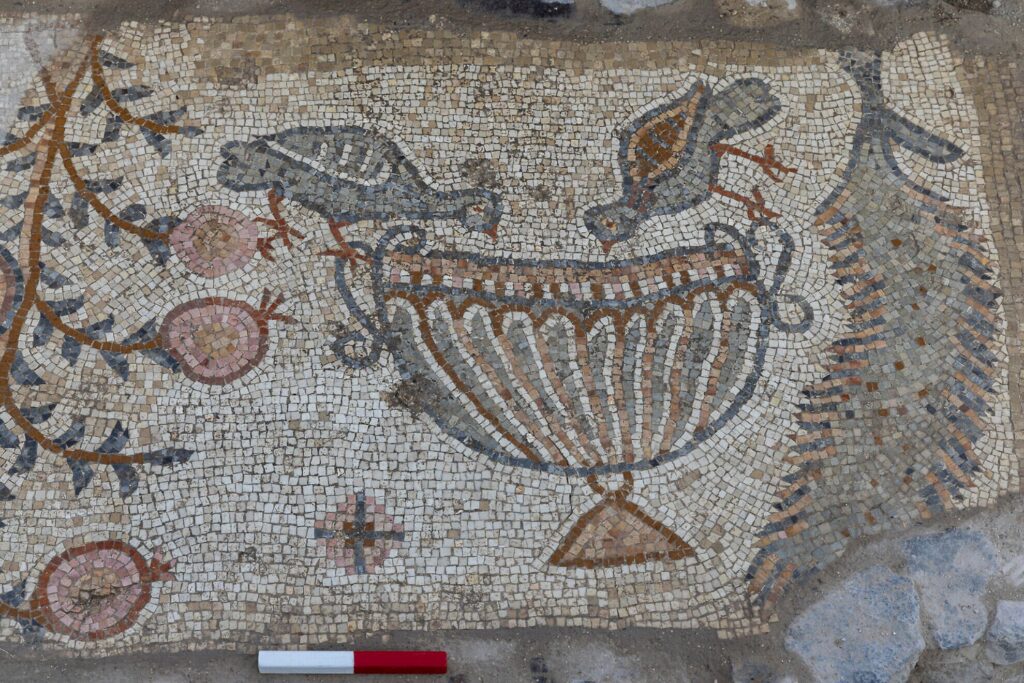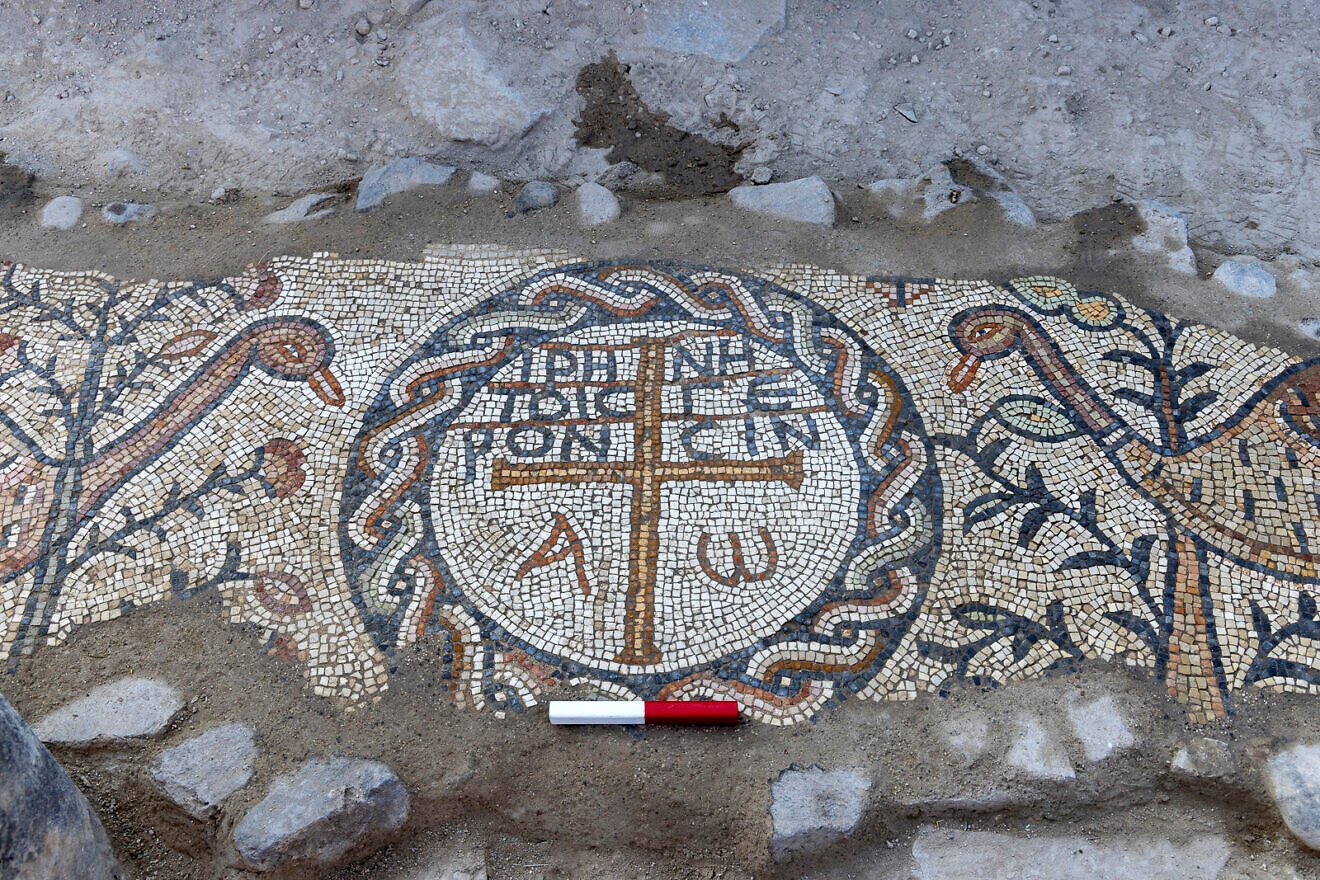In a remarkable archaeological discovery at Sussita, the ancient city of Hippos overlooking the Sea of Galilee in northern Israel, researchers have uncovered what appears to be one of the earliest Christian nursing homes. The find dates to the late fourth or early fifth century CE and may represent the earliest physical evidence of an elder-care institution in the region.
The excavation, conducted by the University of Haifa, revealed a mosaic with a Greek inscription reading “Peace on the elders.” The placement of the mosaic at the entrance to a public building suggests that the facility served as a communal center with a special focus on elderly residents. Scholars believe this represents tangible proof that systematic concern for the elderly was present in early Byzantine Christian communities. Dr. Michael Eisenberg, one of the excavation leaders, described the inscription as “living proof that concern for the elderly was part of organized social structures more than 1,600 years ago,” highlighting the practical side of early Christian compassion.

The find is significant not only for its religious and artistic value but also for what it reveals about the integration of faith and social care in the Byzantine era. The inscription and accompanying artwork reflect a blend of Greek artistic traditions with emerging Christian symbols, showing how Christian communities adapted cultural forms to convey their values. Unlike other mosaics of the time that depicted biblical miracles or glorified patrons, this one is unique in explicitly addressing the elderly, suggesting an institutionalized concern for their welfare.
Northern Israel has been the site of several important discoveries that shed light on early Christianity. At Megiddo, archaeologists unearthed a Roman-era mosaic with inscriptions referring to Jesus as God, believed to be part of the earliest known Christian prayer hall. In the Jezreel Valley village of Et-Taiyiba, a 1,500-year-old inscription proclaiming “Christ born of Mary” was found in the remains of a church, demonstrating the spread of Christianity in the region. At Hippos itself, mosaics depicting miracle scenes were discovered in other structures, underscoring the city’s prominence as a Byzantine Christian center.

What sets the Sussita nursing home apart is its direct reference to the elderly. While early Christian sites across Israel highlight worship, devotion, and community organization, this inscription suggests an even broader vision of faith in practice, one that included structured social care. By dedicating a building and its artwork to the elders of the community, the early Christians of Hippos created something akin to what we would recognize today as a nursing home.
This discovery not only enriches our understanding of Byzantine archaeology but also deepens the historical roots of Christian social ethics. It reveals that over 1,600 years ago, early believers in the Galilee were already weaving compassion for the vulnerable into the very fabric of their communal life.




